Submitted by WA Contents
Multifaceted Ilan and Asaf Ramon International Airport completed in Israel's Negev Desert
Israel Architecture News - May 20, 2019 - 05:55 16071 views
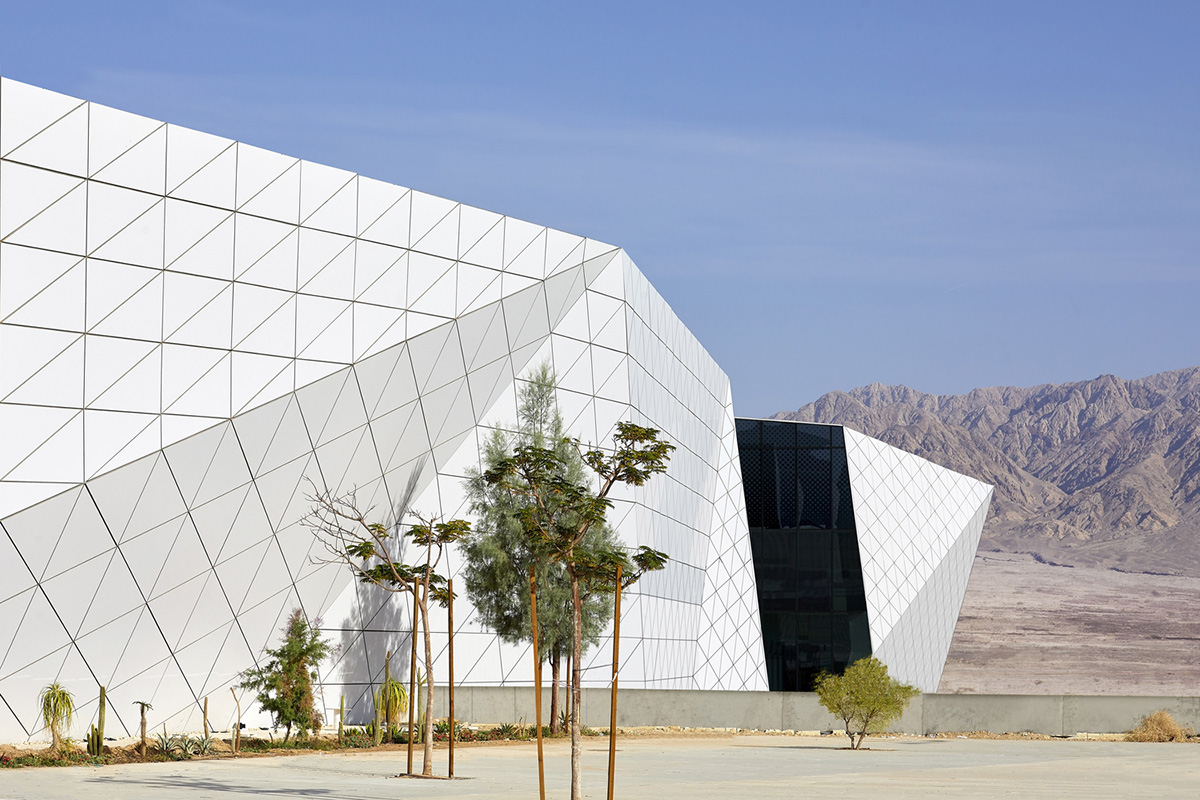
Israeli architecture firm Amir Mann-Ami Shinar Architects, in collaboration with Moshe Zur Architects, has completed the Ilan and Asaf Ramon International Airport in the Negev desert of Israel, the new airport features a multifaceted exterior skin that is wrapped by insulating aluminum triangular panels.
Named Ilan and Asaf Ramon International Airport, the Airport, servicing the Red Sea resort city of Eilat and surrounding region, was commissioned by the Israel Airport Authority (IAA) and was handled from A to Z by the architects in their role as Design Managers. Located in Timna, the airport is Israel's first civil airport built from scratch ("greenfield").

The airport covers a 45,000-square-metre Passenger Terminal Building, with a 3,600 metres of runway and taxiway, alongside 40 aprons, allowing for domestic and international traffic. The two support structures to the north and south of the terminal encompass a 36,210 square-metre area with a 45-metre-high Air Control Tower.
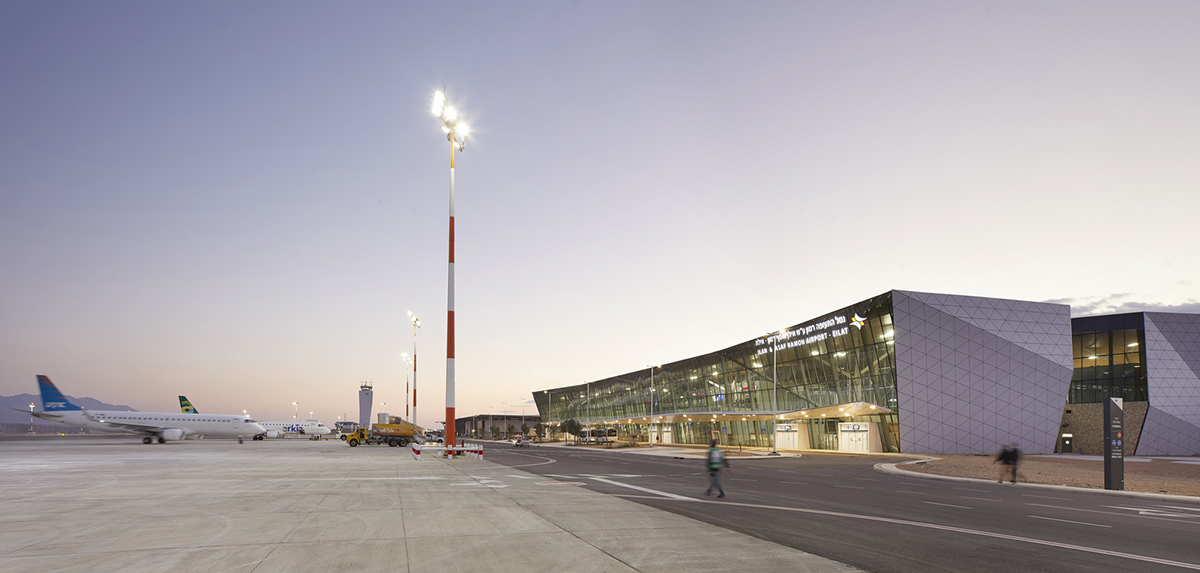
The architects developed a unique and minimal design language influenced by the futuristic world of aviation and its seemingly timeless natural desert surrounding. The decision of the IAA to appoint the architects as design managers responsible for budget, program, and planning schedule, allowed for the architects to implement the design across the entire airport - from the various buildings to each individual check-in counter, unifying the airport under one unique holistic design.
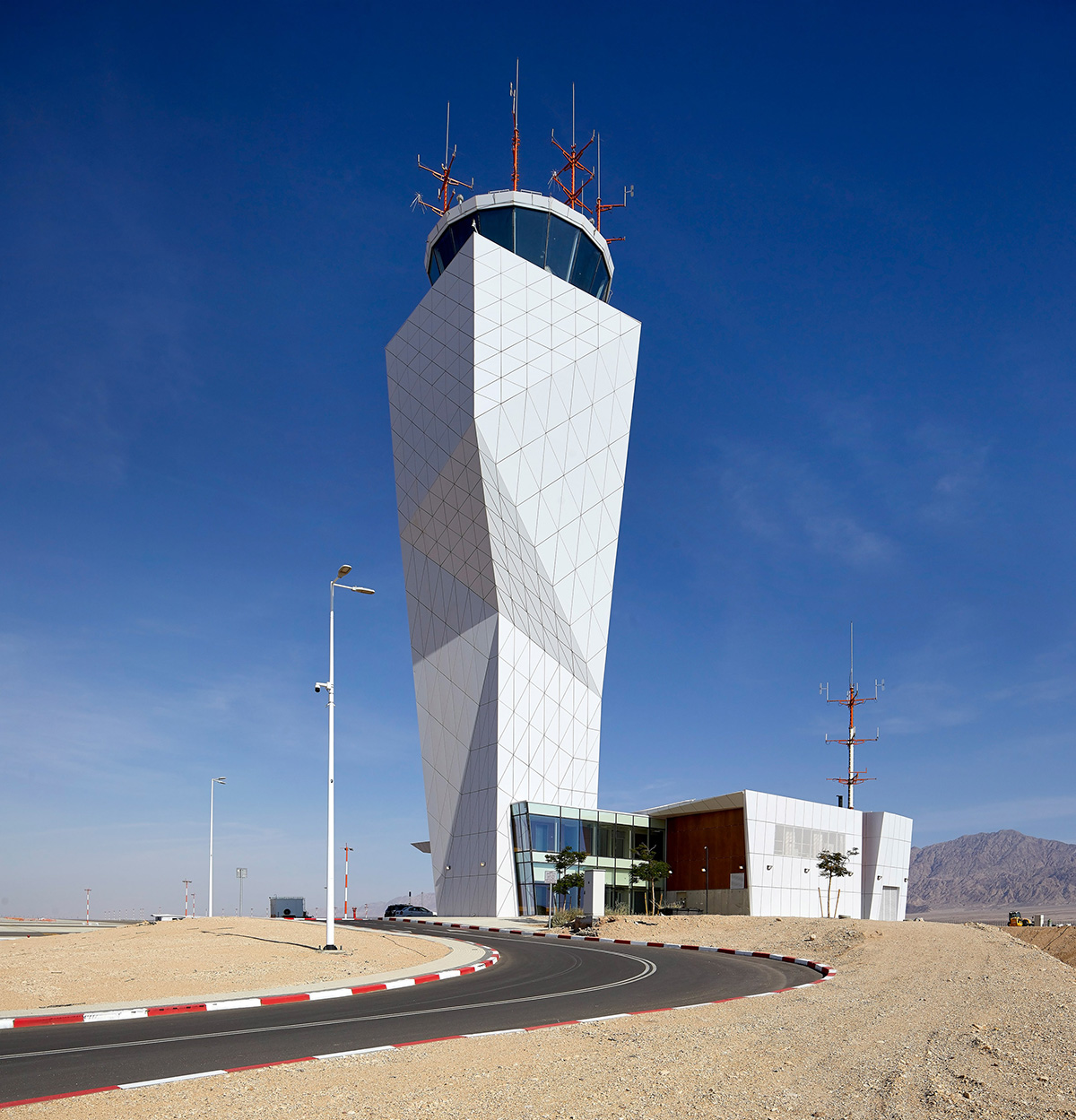
"The mushroom-like rock formations found in Israel's National Timna Park served as inspiration for the initial geometry of the Passenger Terminal Building as a self-shading volume," said the architects.
"Just as the rocks are shaped by the "natural movements" of wind and water, the Terminal's opaque volume was carved by the "natural movements" of the passenger traffic."

Glass curtain walls were inserted, surrounding patios that introduce the natural desert landscaping into the building. These serve as light wells allowing natural light into the depths of the Terminal, instead of the commonly used skylights, impossible within such climate conditions.
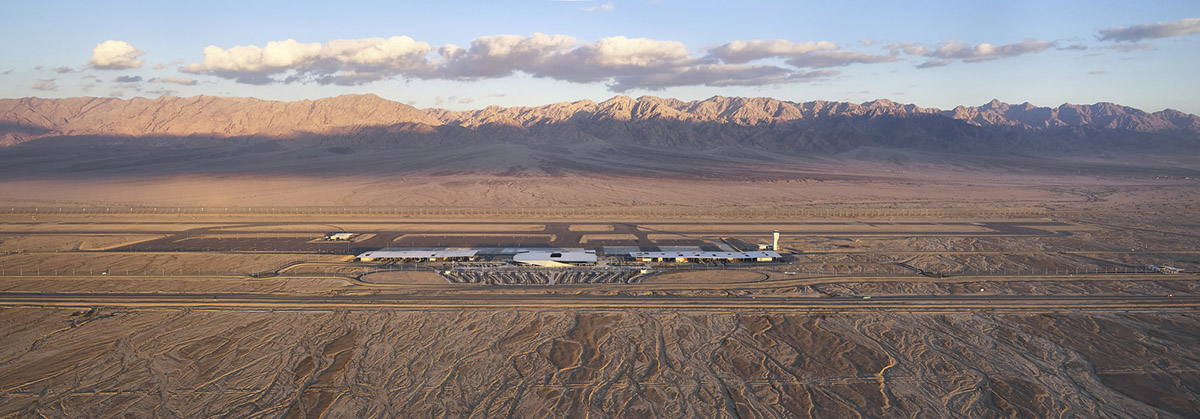
The terminal's envelope consists of a steel and concrete skeleton structure, cladded to the exterior with insulating aluminum triangular panels, continuous from wall to roof that create one single mass.
Towards the interior, the building's volume is hollowed out and the envelope is cladded in a contrasting bamboo-wood, uniting the ceiling and walls over one continuous space.

The terminal building's minimalist interior scheme is based on a tightly organized high-ceilinged hall with low-level furniture and pavilions acting as dividers. Its entire infrastructure is hidden on a lower level. This allows for the roof to be free of any technical equipment as a fifth façade viewed from the airplane window, and for all passenger processes to be efficiently on one single level.

The landscape design development takes cues from the existing river delta fan created by the mountain flooding into the desert valley. Thus, the delicately winding paths of the parking lot and the landscape development follow the shape of the natural spill from the streams.

In addition, local plant seeds were harvested and preserved at the site, grown and incubated in greenhouses during the years of construction, and finally returned to their original location, to serve as the desert vegetation lining the airport's landscape.

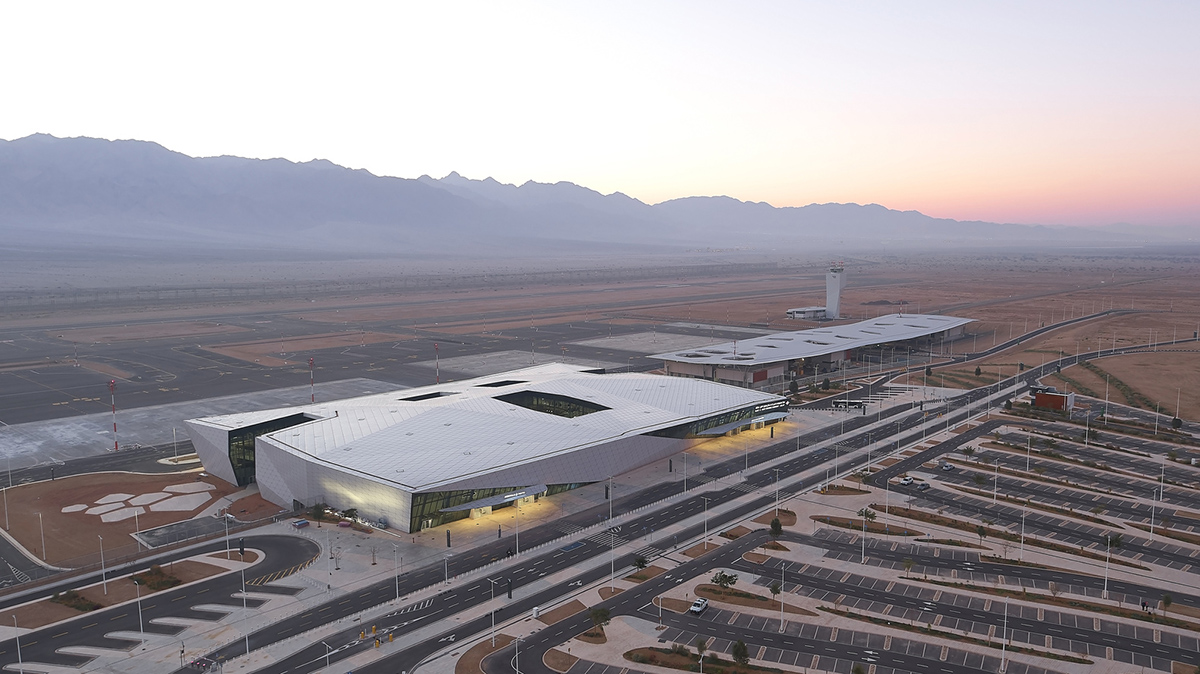

Level plan 00

Level plan -7
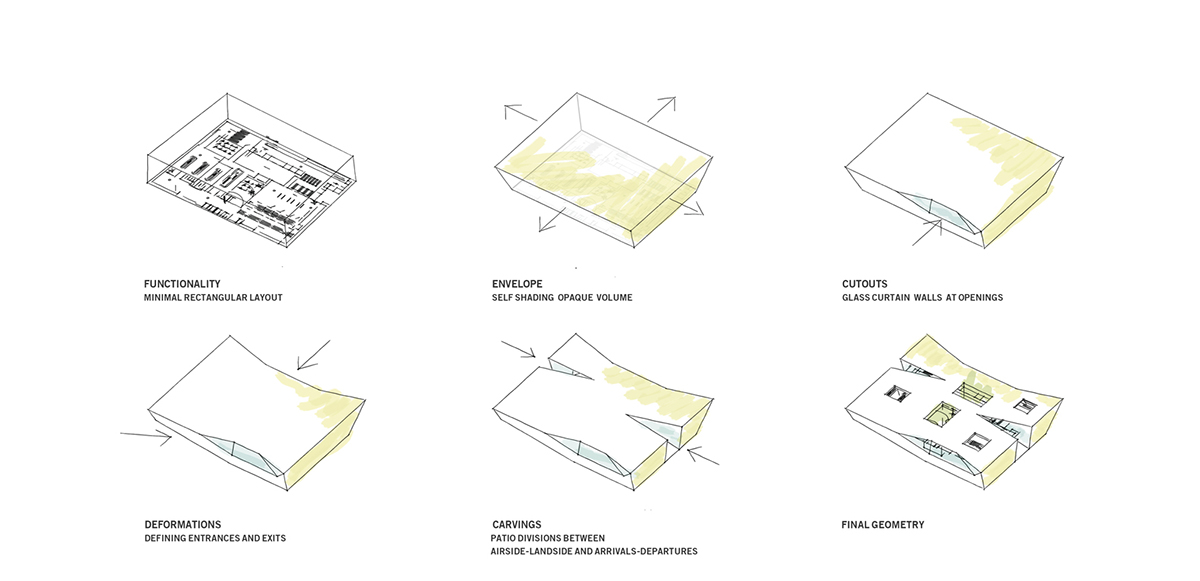
Study diagrams

Passenger terminal, exploded diagram
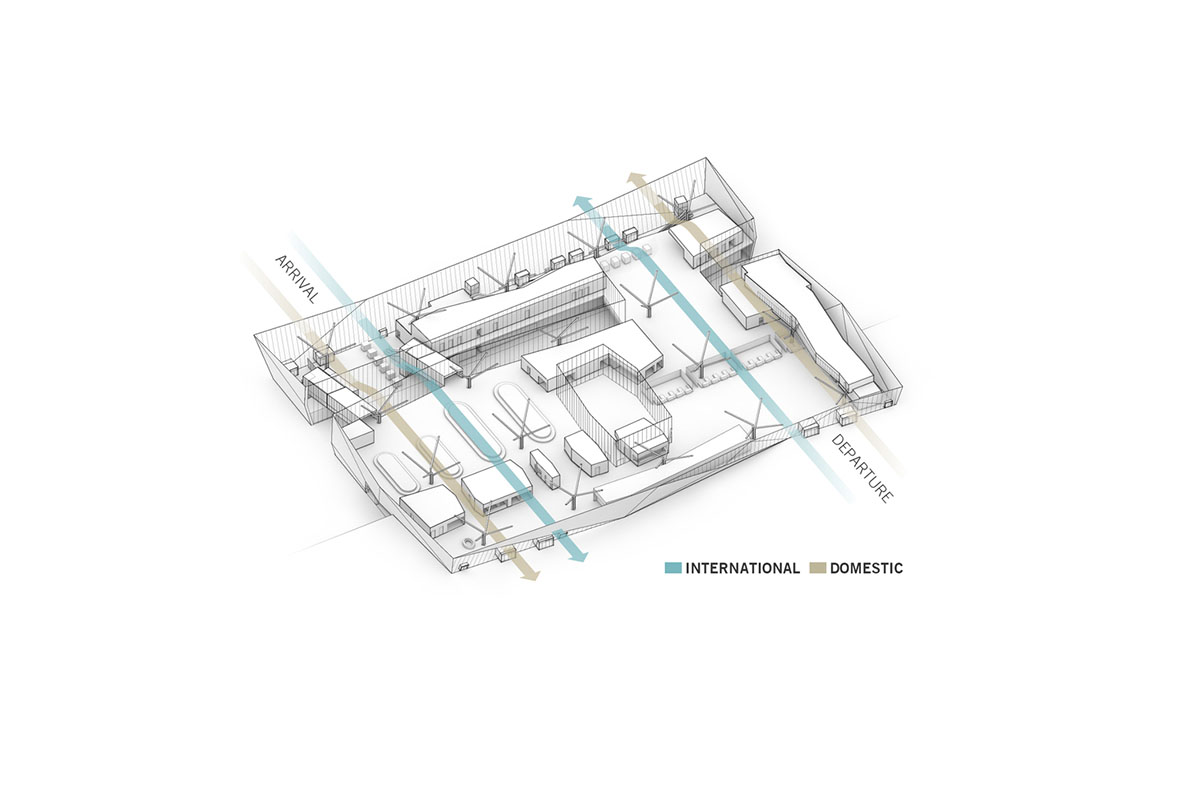
Circulation diagram

Functions
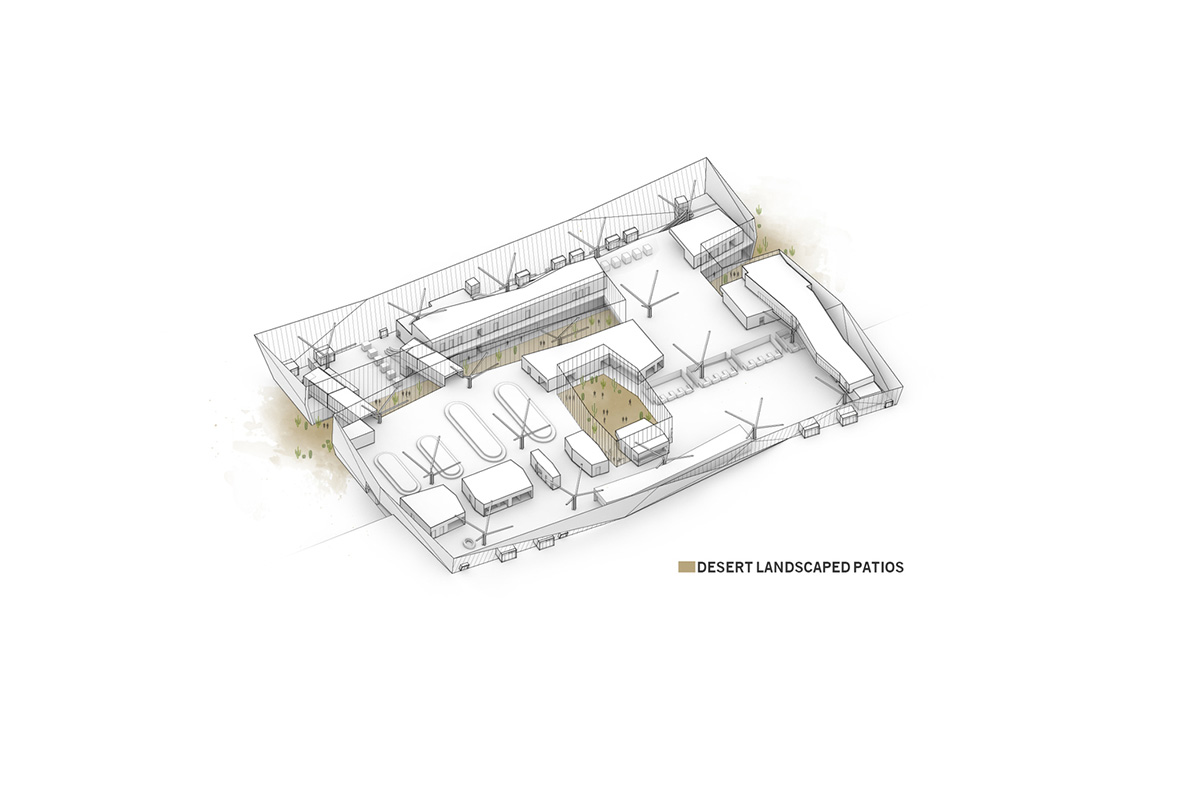
Desert landscaped patios

Support areas structures
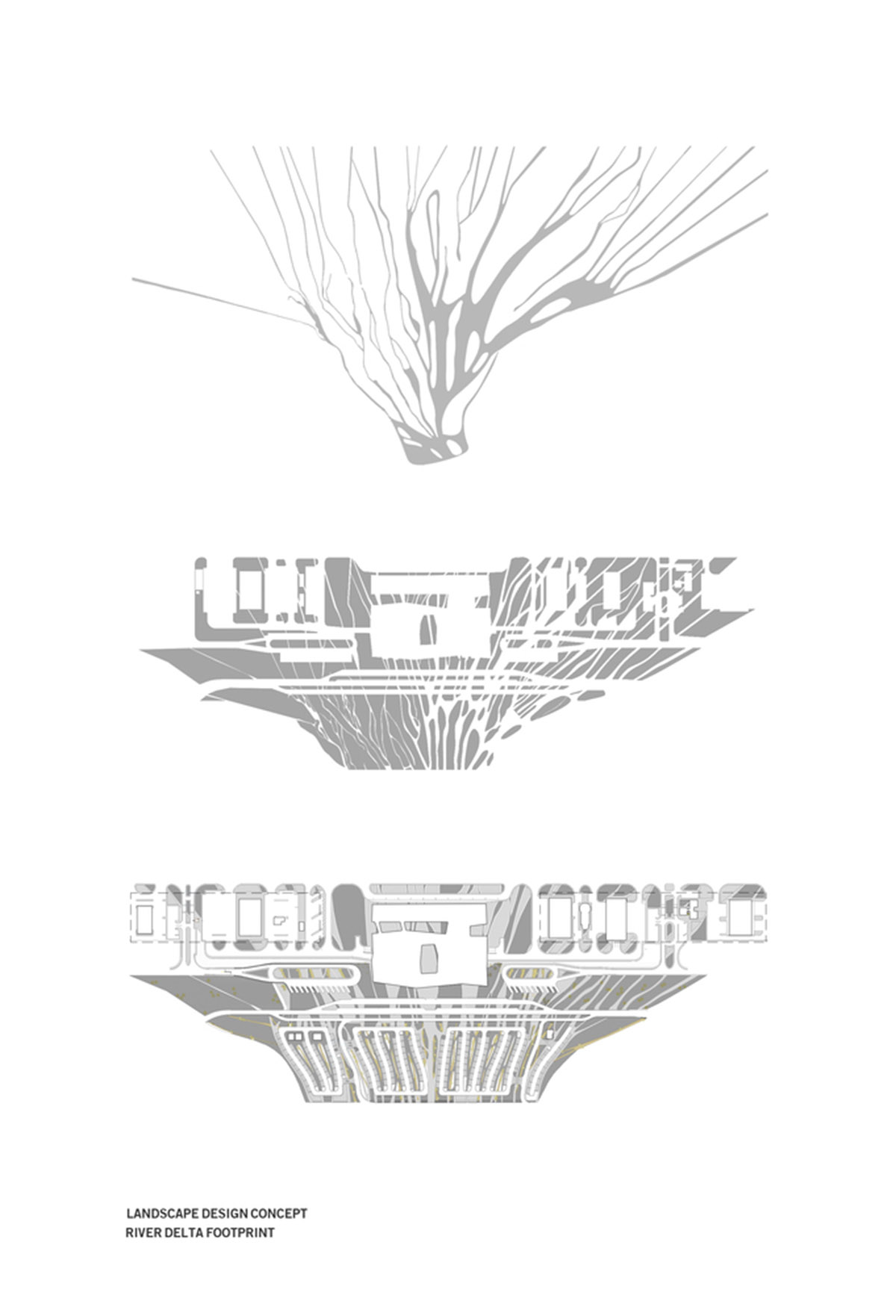
Landscape design concept
Project facts
Client: Israel Airports Authority (IAA)
Design and planning management: Amir Mann - Moshe Zur - Ami Shinar - Orna Zur Architects
Design manager: Amir Mann, Architect
Construction management: Gadish-Baran Partnership
Construction manager: Eng. Ron Havatzelet
Aviation consultant: ARUP London with Amir Mann-Ami Shinar Architects
Engineering: The Overall Design Team includes over 45 local Israeli Engineering Firms
All images © Hufton + Crow
